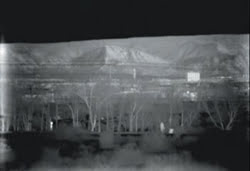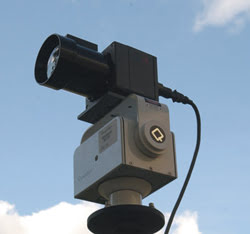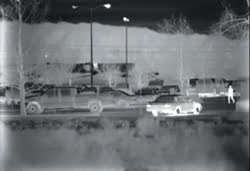Uncooled thermal imaging technology meets new challenges.
Dave Smialek, BAE Systems
Law enforcement and security professionals who safeguard borders, ports, nuclear power and chemical plants, and other high-value/high-danger assets deploy thermal imaging cameras as a critical component to their overall day/night situational awareness plans. One benefit of this type of camera as opposed to light-intensifying night-vision technology or infrared illuminators is that, with thermal technology, radiation emitted from objects can be sensed, providing imagery independent of light, smoke, fog or other obscurants that could provide visual concealment.
The majority of thermal imaging cameras deployed to date are based on uncooled camera cores that provide 320 × 240-pixel image resolution. These cameras, outfitted with the appropriate optics, have served well in applications that require 70 percent probability of recognition of a man-size target at distances of approximately 2 to 2.5 km.
Because security around the globe has tightened in recent years, security professionals have been actively seeking uncooled thermal camera solutions that offer imaging capability beyond 2.5 km, so that responders will have more time for intervention and threat reduction (Figure 1).

Figure 1. IR thermal imaging cameras are used to detect intruders.
To meet this requirement, BAE Systems’ IR Imaging Systems group in Lexington, Mass., incorporated state-of-the-art uncooled 640 × 480 technology into a new, environmentally qualified thermal imaging camera. The advantage of uncooled technology is that it lowers the cost of ownership by eliminating the mechanical cooling system, which not only reduces the camera weight, but also eliminates the required regular maintenance.
The 640 × 480-based camera provides four times the resolution and an estimated 60 percent increase in range over a 320 × 240 camera configured with an optic that will provide the same field of view. Ultimately, the extended range means that applications that previously could be accomplished only with cooled technology can now be achieved with 640 × 480-based uncooled cameras.

Figure 2. Depending upon the application, IR cameras can be handheld or mounted. This camera is mounted to a positioning device.
In a typical security application, the IR camera would be mounted to a positioning device atop a building or a dedicated pole that provides an ideal vantage point relative to the area under surveillance (Figure 2). A microwave transmitter/receiver mounted to the camera provides a wireless means of transmitting imagery to a remote command center and of receiving the commands necessary to control the camera and positioning device.

Figure 3. A 640 × 480-pixel IR thermal camera shows the use of IR technology for access monitoring.
Once the video has been transmitted to the command center, it can be input to an automated video surveillance software system that provides 24/7 monitoring of the thermal imagery against preset alarm conditions (Figure 3).
Meet the author
Dave Smialek is manager of business development at BAE Systems’ IR Imaging Systems in Lexington, Mass.; e-mail: [email protected].